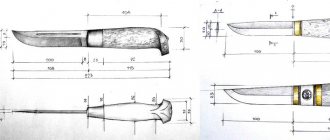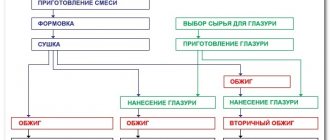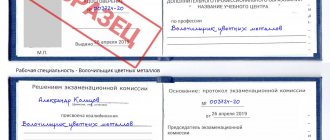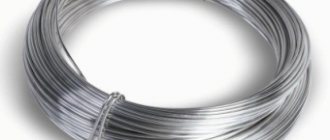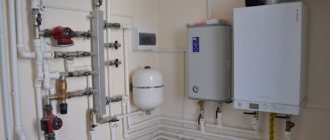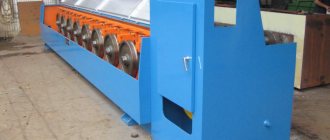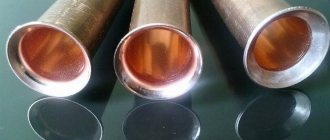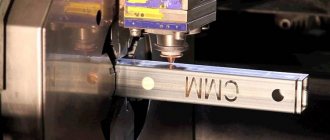Equipment for wire production + video
Wet drawing mills, as a rule, operate using sliding technology and can be combined with dry drawing mills of any multiplicity. They are equipped with independent synchronized electric motors in various modifications.
Also widely used are straight-through dry drawing mills, which are characterized by the most modern design. Such mills are mainly used for the production of small-diameter wire from high-, low-carbon and stainless steel. The main distinguishing features of the mill are its compactness, the absence of belts and pulleys between drives and drums, quiet operation, and the absence of vibrations. Structural design is the main feature of such mills. Thanks to the strength and stability of the frame, the mill can be completely transported, hence the minimum time spent on installation and laying cables.
Direct-flow dry drawing mills are characterized by a horizontal arrangement of drums. Such mills are usually used for the production of wire from low- and high-carbon steels, as well as from stainless steels. The advantages of such equipment are high reliability, ergonomics and ease of operation of the structure, which does not require a special foundation during installation. The unit also features a highly efficient drum cooling system and offers optional equipment.
A variety of wire rod unwinders are also useful for wire production.
Video of how to make wire rod from copper:
Also in the production field, cigar-type twisting machines, double-twisting machines and rope-type machines are widely used.
Product characteristics
First of all, the steel wire must comply with the following GOST standards:
- Only low-carbon steel is used in production;
- Section diameter options: within 10 mm for uncoated varieties and up to 6 mm for coated varieties. The finished product, not thermally treated, must withstand at least four folds without damaging its integrity;
- Unlike dark wire, steel production does not allow errors: cracks, sunsets and scale. Small scratches or a rippled effect, spots without galvanization are acceptable, but this should not affect the quality as a whole.
- Steel wire is produced in coils (winding three separate pieces is acceptable) or coils (only one piece is allowed).
Properties
The main advantage of copper wire is its low resistivity. That is why it is actively used in the electric power industry and in the design of various electrical appliances. The production of wires is greatly facilitated by the high ductility of the metal. High-quality copper is easy to process in high precision mode. The alloy formula is selected individually in different cases, based on what target properties should be achieved. The melting point of pure copper is 1083 degrees Celsius or 1356 degrees Kelvin. And the density of this metal is 2.07 g per 1 cm3. Therefore, it is not difficult to calculate the mass over a cross section:
- with a thickness of 1.5 sq. mm. – 0.0133 kg per 1 m3;
- with a cross section of 4 sq. mm. – 0.035 kg per 1 m3;
- with a cross section of 6 sq. mm. – 0.053 kg per 1 m3.
Stages of the production process
The production of steel wire is carried out by drawing the metal on a special device and the subsequent firing process or without it. Production Process Steps:
- Pickling (removal of scale). The surface of the wire is degreased, ground and polished;
- Treatment at high temperatures, as a result of which the product becomes softer;
- Flattening and leveling with a special hammer;
- Drawing on a special device, which is pulling at maximum speeds.;
- Burning.
There are two types of firing:
- Light using inert gas, which eliminates oxidation of the product and scale;
- Black, in which scale is present on the surface of the wire.
Wire drawing
For production at factories, a special casting technology is used, which makes it possible to obtain copper wire with a cross-sectional diameter of about 20-30 millimeters. This figure is quite high, since such a thick wire has a lot of disadvantages - high specific gravity, high resistivity of the material, and so on.
Therefore, after casting, drawing is also used. This technology allows you to reduce the diameter of the product to the required parameters (from 1-2 micrometers with ultra-fine drawing to 10 millimeters with coarse drawing). The drawing technology itself is quite simple: thick wire is passed through special holes (dies), the diameter of which is less than the diameter of the original wire.
Technology
Drawing requires special drawing machines, as well as adherence to a certain procedure.
- Immediately before drawing, the original wire must undergo an etching procedure. For this, a solution of hydrochloric acid is usually used, which is heated to low temperatures (40-50 degrees Celsius). After etching, it is also recommended to anneal the metal workpiece - this will make the metal fine-grained, which will allow for better drawing. After annealing, it is necessary to neutralize the remaining etching acid and rinse. Pickling and annealing can significantly increase the service life of drawing machines - if this is not done, the drawing holes-dies will quickly become clogged with scale, which will slow down the production process.
- Now you can proceed directly to drawing. To do this, the ends of the original wire are sharpened using forging tools, and then the wire is inserted into special die holes. After this, the engine of the drawing machine is started. To obtain thin or ultra-fine wire of small cross-section, it is successively passed through several dies.
- At the last stage of processing, the wire becomes quite rigid and springy. To get rid of this drawback, final annealing of the material occurs in the last compartment of the drawing machine. At the end, drying is carried out in special cabinet compartments - after this, winding is carried out on reels. Drawing is completed - the wire spools can now be placed in a warehouse and delivered to the customer using vehicles.
Automation
The drawing procedure is semi-automated - the operator only prepares and threads the initial wire, and the machine itself performs the drawing itself in automatic mode (although the operator can control the procedure parameters using the control panel).
In some cases, special lubricants can be applied before drawing - these can be fatty oils, emulsion inhibitors, solutions of alkaline salts, and so on. The purpose of applying a lubricant is to reduce friction during drawing - this allows you to obtain a thinner and more uniform wire + by applying a lubricant, the risk of ruptures is minimized.
Copper wire welding
Used for welding products and sheets based on copper or brass alloys. Copper wire in this case is used as a substrate from which the weld will be formed. Let's consider the critical points of the main welding methods:
Gas welding
For gas welding of copper, it is recommended to use boron-based flux solutions to quickly remove oxides in order to improve the quality of the weld and minimize the formation of air bubbles inside the weld.
It is necessary to monitor gas consumption depending on the thickness of the alloy. If the thickness of the object is less than 1 cm, then the gas consumption will be 150-160 l/hour. If the thickness of the object is more than 1 cm, then the consumption will be about 200-250 liters.
Welding is recommended to be done with quick but precise movements. Melting should be done like this: first the filler wire is melted - then the edges of the copper objects are melted.
Semi-automatic welding
Semi-automatic welding is recommended to be done in a flux environment to minimize the risk of air bubbles. The optimal wire for welding is M2, although grades M1 and M3 can also be used.
For semi-automatic welding, it is recommended to use a voltage of 30 volts and a current of 300 amperes. Welding is recommended to be done with transverse movements, but without sudden vibrations. Otherwise, air bubbles and harmful oxides may form, which will adversely affect the quality of the weld.
Argon arc welding
This welding method is optimal. By using argon, the risk of formation of oxides and air bubbles is reduced, which makes the seam smooth and solid. For welding, you need to use electrodes based on tungsten alloys. Electrodes on a different base are quickly destroyed and can contaminate the seam. For welding, it is recommended to use reverse polarity current. If the copper product has a large and medium thickness, then a slight heating must be performed before welding. When working with thin products, preheating may not be necessary.
Classification depending on the scope of application
In accordance with where exactly the steel wire is planned to be used, the following classification has been developed:
- Stainless steel, not afraid of rust and oxidation processes;
- Welding, which is used in electric arc welding;
- Reinforcement, which strengthens reinforced concrete structures of various types;
- Spring, which, according to the name, is used in the production of spring products;
- Rope line, from which river and sea ropes are made. It is also used for braiding cables;
- Knitting made from low carbon steel. In demand everywhere.
Types of steel wire differ in size and cross-sectional shape. Groups from the first to the ninth inclusive have a section thickness from a minimum of 0.1 (for the first group) to a maximum of 8 mm (for the ninth).
As for the cross-sectional shape, it can be round, square, multifaceted or shaped.
Galvanizing process
In order to protect the product from corrosive processes, galvanization is used. Galvanized wire can be used in adverse environmental conditions, as it is not susceptible to moisture and has exceptional wear resistance. The galvanizing process has its own nuances. Galvanizing can be carried out by hot galvanizing. The quality of the wire is the highest. Hot galvanizing helps protect the product not only from corrosive processes, but also from adverse environmental factors. This wire has greater flexibility without loss of strength.
Resistance calculation
Electrical resistance is of particular importance in situations where the wire is used as a winding for transformers and generators. After all, if the resistance is too high, then in the event of an emergency, the winding may ignite, which can lead to catastrophic consequences.
Resistance formula
To accurately calculate resistance, use the following formula: R = (P x L)/S. It deciphers like this:
- R is the total resistance. We need to find this parameter as a result of calculations (units of measurement - Ohm).
- P is the resistivity of the material. This indicator is a physical constant, and it depends on the type of chemical element. For copper the constant P will be equal to 0.0175 (units - (Ohm x mm x mm)/m).
- L is the total length in meters. The larger it is, the higher the resistance of the conductor will be.
- S is the cross-sectional area in square millimeters. This parameter also affects the final resistance - the smaller it is, the higher the resistance will be.
Please note that the parameter S is usually indicated in the technical documentation, but instead of the cross-sectional area, sometimes only the cross-sectional diameter of the wire is indicated. In this case, it is necessary to calculate the area using the formula: S = (Pi xdxd)/4. This formula is deciphered as follows:
- Pi is a mathematical constant that is approximately equal to 3.14.
- d is the cross-sectional diameter of the conductor in millimeters.
As a result, the resistance of copper wire is measured using two formulas: R = (P x L)/S = (4 x P x L)/(Pi xdxd).
Examples of problems
Let's try to solve a few simple problems:
- Task 1. Determine the resistance of a wire whose length is 100 meters and cross-sectional area is 5 square millimeters. In our problem, the area parameter is known, so we will use the first formula R = (P x L)/S. Let's substitute our values: R = (0.0175 x 100)/5 = 0.35 Ohm.
- Task 2. Determine the resistance of a wire whose length is 500 meters and cross-sectional diameter is 2 millimeters. In this problem the diameter is known, so we will use the second formula R = (4 x P x L)/(Pi xdxd). Let's substitute our values: R = (4 x 0.0175 x 500)/(3.14 x 2 x 2) = 2.78 Ohm.
Types of coatings
Depending on the surface treatment, steel wire can be:
- With polishing;
- With etching;
- With grinding;
- With hood.
Wire that has been fired and galvanized is in great demand. The areas of its application are diverse. Chain-link is made from fired and galvanized wire. It is used for the production of supports used in viticulture. Another area of its application is communication lines. Unburnt wire is also quite in demand. First of all, nails are made from it.
